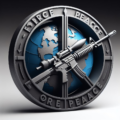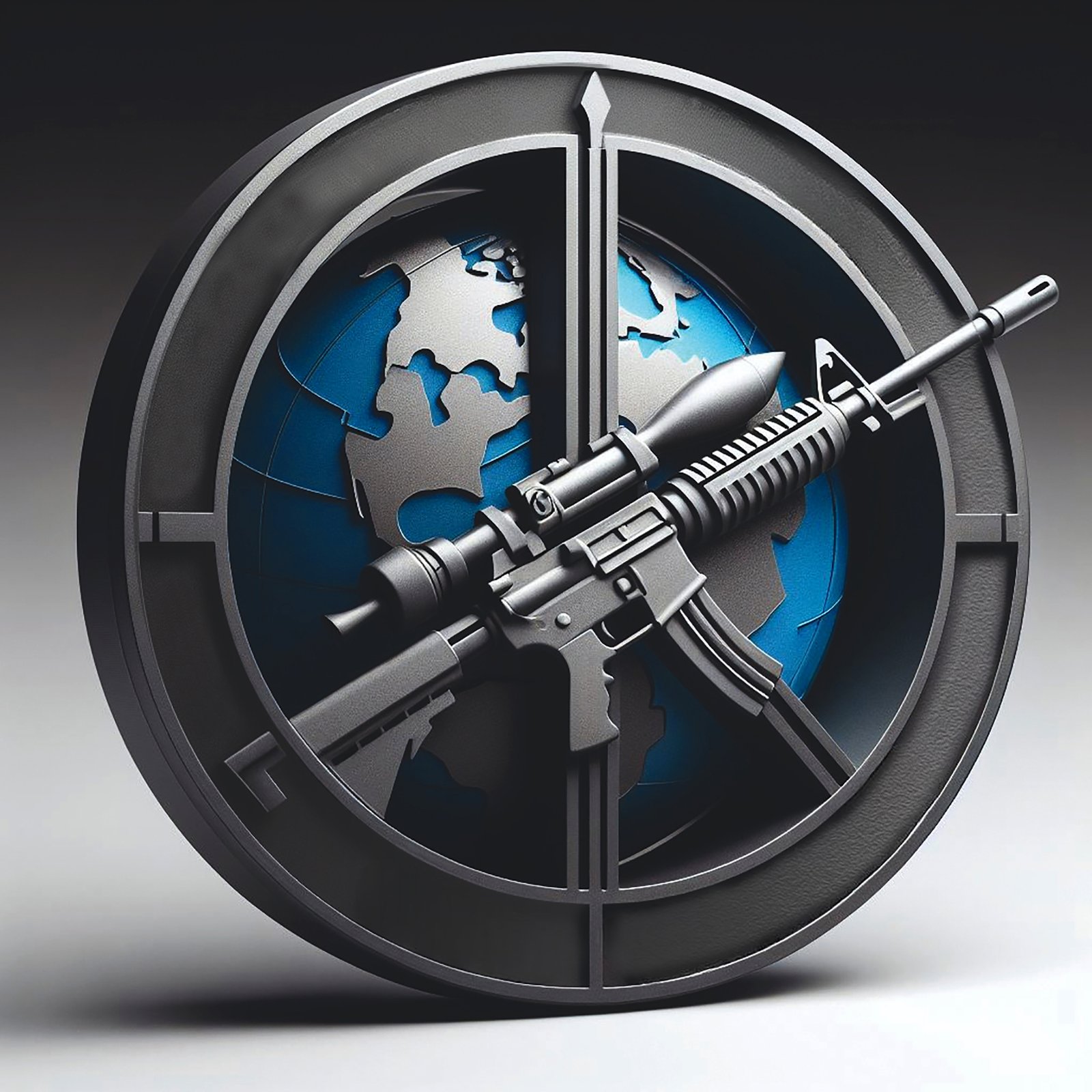Our Team
Together we are a mighty force
Diversity within our team is not just valuable; it’s essential.
In our non-profit organization dedicated to conflict resolution and peacebuilding, the varied perspectives, experiences and backgrounds of our team members serve as catalysts for innovation and creativity.
Embracing diversity allows us to approach challenges from multiple angles, leading to more effective strategies and ultimately, greater success in achieving our mission.
Together, we celebrate our differences and harness them as strengths, forging a path towards a more harmonious and peaceful world.
Executive Authority

Who is the Founder of The International Federation For Conflict resolution and Building Peace?
The Founder, Chairperson and Executive Director is
Ms. Bara’ Al Abbadi
With over 10 years of international experience in assisting vulnerable refugees and asylum-seekers, she has achieved notable success in implementing diversity and inclusion strategies within the United Nations system. A United Nations employee with extensive experience across multiple departments and project management roles, dedicated to serving communities in dire need and desperate situations worldwide. Committed to utilizing her skills and efforts in various humanitarian projects.
A resourceful employee with
a proven track record in humanitarian field projects, known for her critical thinking skills and extensive network connections.
Extensive expertise in managing complex emergency operations coupled with executive leadership abilities in high-tensioned areas, including South Sudan-Juba, Djibouti, Iraq, Yemen, Syria and Lebanon.
Demonstrated proficiency in identifying challenges and devising efficient solutions for swift implementation. Exceptional adaptability to navigate unconventional and challenging circumstances.
She has been tasked with conducting evaluation and inspection missions in
Kuala Lumpur, Cairo, Dubai, Abu Dhabi, Rome, and Istanbul, showcasing her extensive proficiency in managing diverse operational requirements in accordance with humanitarian standards.
She excelled as a Conflict Resolution Analyst in London during her academic research journey, demonstrating outstanding performance and significantly broadening her expertise and experience in conflict resolution.
Public Relations experience with the ability to engage effectively with all community groups.
Master’s Degree of Science International Conflict and Cooperation Programme from
the UNIVERSITY OF STIRLING, UNITED KINGDOM
Received over 30 professional certificates from international organizations and institutes covering a range of areas including Global Diplomacy, Gender Equality, Public Relations, International Protocol, Cyber Security, Emergencies and their humanitarian impact, Protecting Humanity on the Planet and AI awareness and its significance in human development.
Our Incredible Team
Our cohesive team collaborates effectively, encouraging one another to innovate and devise inventive solutions, thereby consistently achieving outstanding outcomes in managing conflicts and building Peace.
We have convened to leverage our diverse expertise, passion, skills and knowledge from across the globe to achieve remarkable milestones in fostering peace and advancing human rights.
Our distinctiveness stems from our diverse composition.















We are Conflict resolvers and Peace Builders
As practitioners in the realm of human rights, we solemnly commit to unwavering diligence, collaborative efforts, and the full utilization of our abilities to mitigate conflicts, foster societal development and realize peace.
We have assembled from various countries across the globe to dedicate our collective efforts and expertise towards the pursuit of Peace and Prevent Conflict

















We hereby embrace the following conventions
The United Nations Security Council Resolution No. 1325
On October 31, 2000, upon the 20th anniversary of the United Nations, the UN Security Council
unanimously adopted Resolution 1325. This resolution is significant, it is the first resolution passed by the Security Council that specifically addresses the distinct and disproportionate effects of war on women and their often under-valued and underutilized contributions to both the prevention and resolution of conflicts and the maintenance of peace and security. Therefore, The UN Security Council called for the “adoption of a gender perspective in the negotiation and implementation of peace agreements; active participation of women in the maintenance and promotion of peace and security; and the support of local women’s peace initiatives and indigenous processes for conflict resolution”. The aim of the resolution reaffirms the need to increase women’s role in decision-making concerning conflict prevention and resolution, it also stresses the importance of women’s equal participation and full involvement in all peace promotion processes and calls Member states to increase women’s representation at all decision-making levels at national, regional and international levels for conflict resolution, conflict management and conflict prevention.
The Geneva Convention is the foundation of modern international humanitarian law, which at present day encompasses four conventions and three additional protocols. Collectively, the clauses of this convention represent modern efforts to protect people in times of armed conflict.
An international conference conducted in 1949 consisted of high-profile diplomats to build on the earlier treaties for the protection of war victims, revising and adding them into new four conventions comprising 429 articles of law—known as the Geneva Conventions of August 12, 1949.
The Additional Protocols of 1977 and 2005 supplement the Geneva Conventions.
The Geneva Conventions apply in all war cases, or any other armed conflict between nations. Additionally, the convention clauses apply in cases where a nation is partially or fully occupied by soldiers of another nation, even if when there is no armed resistance to that occupation.
Cyber Security and Digital Security are concepts advocate safeguarding data on the Internet. The difference is that Cyber Security covers more ground in protecting the whole network and the entire computer systems and other digital components from any unauthorized access. Digital Security is an aspect of cyber security, it involves protecting the presence online data of the personnel such as their
assets, identities and financial accounts.
There is a growing concern for many humanitarian organizations today due to the serious harm cyber attacks could cause to the humanitarian sector on several levels. Humanitarian organizations are one of the most targeted entities to be attacked by terrorists and some authoritative regimes leaving the organization and its staff vulnerable and posing serious threats. If computer systems used by impartial humanitarian organizations are disrupted by cyber operations, their relief work slows down, becomes dysfunctional, and cannot reach people at scale. The risk of cyber-attacks is affecting directly the safety and integrity of humanitarian personnel and operations.
Emphasizing the impartial role of our organization in conflict management and peace-building, we also affirm that one of the organization’s essential mandates is protecting its staff and people’s confidential data from migrants, refugees, civilians, conflict leaders, detainees, children, women and whoever involved in our humanitarian activities by safeguarding their privacy and take the best applicable measures in preventing any digital breach that might pose them to a threat. On this occasion, the organization would like to adopt Resolution 12 of Safeguarding Humanitarian Data enriched in international humanitarian law.
Our organization believes that Goal 16 is the most important goal among the 17 SDGs. It must be prioritized and turned into an urgent action agenda at the international and national levels. Goal 16 focuses on tackling all violence forms, specifically military intervention and terrorism that could lead to serious conflicts breach societies’ safety as well as result in violation of human rights. It must be applied in all available tools and standards to properly accomplish the rest of the global sustainable development goals.
Military intervention and armed conflict are the key drivers for poverty and famine, it will also damage the agricultural system and destruct the
sewage, which causes water pollution and the spread of diseases. Moreover, conflicts and wars cause the destruction of roads and thus will affect logistical support and paralyze the movement of aid to people who are in dire need. Certainly, these conditions will affect the growth and
prosperity of nations and weaken their economies. Even countries that are not part of the conflict, will find themselves involved in depleting their resources to resolve the conflict of some countries instead of harnessing these resources to serve humanity.
Our vision assures that achieving Goal 16 should have zero tolerance as none of the rest 16 goals could be met without
achieving peace and preventing all forms of conflicts.
The Convention on the Elimination of All Forms of Discrimination Against Women (CEDAW) is an international treaty adopted by the United Nations General Assembly in 1979. Its main clauses include:
-
Non-discrimination: CEDAW prohibits discrimination against women in all areas of life, including civil, political, economic, social, and cultural fields.
-
Elimination of stereotypes: It calls for the eradication of stereotypes and prejudices that perpetuate discrimination against women, aiming to promote gender equality and women’s empowerment.
-
Political participation: CEDAW advocates for women’s equal participation in decision-making processes, including in politics, government and public life.
-
Education and employment: The convention stresses equal access to education and employment opportunities for women, as well as equal pay for equal work.
-
Marriage and family: CEDAW emphasizes the need to ensure equality within marriage and family relationships, including issues such as marriage age, consent, and property rights.
-
Health: It addresses women’s reproductive rights and access to healthcare services, including family planning and maternal healthcare.
-
Elimination of violence against women: CEDAW calls for the prevention and elimination of all forms of violence against women, including domestic violence, sexual harassment and trafficking.
-
Equality before the law: The convention advocates for legal reforms to ensure women’s equal rights and access to justice, as well as measures to address gender-based discrimination within legal systems.
Overall, CEDAW serves as a comprehensive framework for promoting gender equality and protecting women’s rights on a global scale.
What are the pillars of the UNSCR 1325?
Women, Peace and Security
The UN Security Council Resolution 1325 is an elucidation of the groundbreaking resolution concerning women, peace and security. An expanding body of research increasingly acknowledges the crucial role of women's participation in peace and security matters as essential for attaining enduring stability. There are four main pillars of UNSCR 1325.........
Subsequent Resolutions to UNSCR 1325
A global commitment
Is stressing the importance of women’s equal participation and full involvement in all peace promotion processes and calling Member states to increase women’s representation at all decision-making levels at national, regional and international levels for conflict resolution, conflict management and conflict prevention.
Numbers Speak
The statistics cited are sourced from “The Report on Women in Public Life: Gender, Law and Policy in the Middle East and North Africa,” published by (OECD) – Organization for Economic Co-operation and Development in September 2014.
Despite advancements, the educational strides made by women have not fully translated into increased empowerment and engagement in public spheres. Women’s economic and public participation in the MENA region remains the most limited globally.
Gender equality statistics.
In 2013, women’s engagement in economic activities, political involvement and
decision-making processes amounted to 12.8%.
Women’s Representation in Executive Cabinets in MENA region.
According to 2012 statistics, the average representation of women in executive cabinets across the MENA region stood at a mere 8%. Nevertheless, the proportion of women serving as ministers remains notably low in the majority of MENA countries.
Female Participation in the Workforce
In 2012, women’s labor force participation in the MENA region stood at 27%, marking the lowest rate globally, in contrast to 65% for OECD countries.






